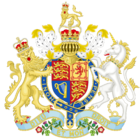Energy Act 1976 facts for kids
| Act of Parliament | |

|
|
| Long title | An Act to make further provision with respect to the nation's resources and use of energy |
|---|---|
| Citation | 1976 c. 76 |
| Introduced by | Minister of State, Department of Energy (Dr. J. Dickson Mabon) 15 June 1976 (Second Reading) (Commons) |
| Territorial extent | United Kingdom |
| Dates | |
| Royal assent | 22 November 1976 |
| Other legislation | |
| Repeals/revokes | Fuel and Electricity (Control) Act 1973 |
| Amended by |
|
|
Status: Amended
|
|
| Text of statute as originally enacted | |
The Energy Act 1976 was a law passed in the Parliament of the United Kingdom. It gave the government, through the Secretary of State, special powers. These powers helped them manage how energy was made, shared, bought, and used. The Act also aimed to save energy.
Contents
Why the Energy Act 1976 Was Needed
Before this Act, there was a law called the Fuel and Electricity (Control) Act 1973. This earlier law was created during the 1973 oil crisis. It gave the government emergency powers to control fuel and electricity.
However, the 1973 law had to be renewed every year. The government wanted to make these important powers permanent. They also wanted to create new rules for saving energy. This new Act would help the UK follow energy rules from the European Council.
The government also needed to update older laws about energy. For example, they wanted to control the burning of extra gas, known as flaring. The Act also changed rules for the British Gas Corporation. It no longer had to supply gas to very large users.
Another goal was to make sure car fuel use information was public. This would help people choose more fuel-efficient cars. The Act also increased money available for power projects.
What the Energy Act 1976 Did
The Energy Act 1976 became law on 22 November 1976. Its full name is 'An Act to make further provision with respect to the nation's resources and use of energy'. This means it added more rules about how the UK uses its energy.
Key Parts of the Act
The Act had 23 main sections and 4 detailed schedules. Here are some of the most important parts:
- Controlling Energy: The Act gave the government power to control energy. This included making rules about how fuel and electricity were used. It also allowed the government to give directions during energy emergencies.
- Keeping Fuel Reserves: The law made sure the UK kept enough supplies of oil and other fuels. It also required power stations to keep enough fuel on hand.
- Managing Offshore Gas: It set rules for how natural gas found offshore (in the sea) could be supplied and used. This included rules about changing gas into liquid form.
- Saving Energy and Other Rules: The Act put limits on burning off natural gas (flaring). It also changed the rules for supplying gas to large users. The law also set rules for new power stations and how much fuel cars should use.
- Money and Rules: The Act included rules about money for power projects. It also explained how orders and directions from the government would work. It set out how the law would be enforced and what the penalties were for breaking it.
How the Act Changed Things
The Energy Act 1976 replaced the older Fuel and Electricity (Control) Act 1973. However, the 1973 Act still applied to the Channel Islands and the Isle of Man.
Even today (in 2020), parts of the 1976 Act are still in force. It continues to set rules for:
- Keeping large amounts of oil and other fuels.
- Turning offshore natural gas into liquid.
- Controlling the burning of extra gas.
- Fueling new and changed power stations.
- Information about how much fuel cars use.
Updates to the Act
Over time, some parts of the Energy Act 1976 have been changed or removed. This happens as new laws are made. For example:
- Section 8 of the 1976 Act was removed by the Oil and Gas (Enterprise) Act 1982.
- Section 16 was removed by the Electricity Act 1989.
- New sections, 12A and 12B, were added by the Energy Act 2016.
See also

